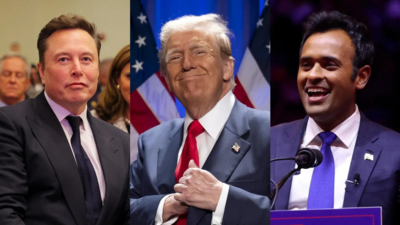
President-elect Donald Trump has assigned Elon Musk, the tech billionaire, and Vivek Ramaswamy, former Republican presidential candidate, to spearhead efforts to significantly reduce the US federal budget. With proposals including a 30% spending cut and a potential halving of the 2.3 million civilian federal workforce, these measures could profoundly impact government agencies and the livelihoods of federal employees.
A Closer Look at the Federal Workforce
The US federal government is the nation’s largest employer, and any sweeping budget reforms could have far-reaching implications for its workforce. Here's what we know:
How Many Federal Workers Are There?
The federal government currently employs about 2.3 million civilian workers, accounting for roughly 0.6% of the US population, according to the White House personnel office. While the workforce has grown by 7% since 2019—largely due to new infrastructure projects funded by the 2022 infrastructure package—it still represents a smaller share of the population compared to historical peaks (e.g., 2% in the 1940s, 1% in the 1960s).
Who Are Federal Workers?
Federal employees differ from the general US workforce in terms of age, education, and experience:
- Age: 42.5% of federal workers are 50 or older, compared to 33.2% in the overall workforce.
- Education: Over 54% hold a bachelor’s degree or higher, compared to 40% of the broader workforce.
- Military Experience: About 30% of federal workers are veterans, significantly higher than the 5% share among the general workforce.
How Much Do Federal Workers Cost?
In fiscal year 2022, federal salaries and benefits totaled approximately $271 billion—4.3% of total government spending. The Congressional Budget Office (CBO) has noted that matching private-sector pay scales could push this figure to nearly 10%.
Interestingly, federal workers in lower-skilled roles tend to earn more than their private-sector counterparts, while those with advanced degrees often earn less.
Where Do Federal Workers Work?
While Washington, D.C., is synonymous with the federal government, 80% of federal employees work outside the capital region. Key agencies employing the majority of federal workers include:
- Department of Veterans Affairs: 487,000 employees.
- Department of Homeland Security
- Department of Justice
- US Armed Services
Notably, about 70% of the federal workforce is engaged in national security-related roles.
Proposals by Musk and Ramaswamy
Elon Musk advocates for a 30% reduction in federal spending, while Vivek Ramaswamy proposes cutting the workforce by half. If implemented, these drastic measures could reshape the structure and operations of federal agencies, raising concerns about the future of public services and the economic impact on federal employees.
The Debate Ahead
As the Trump administration moves forward with its budget reform agenda, the federal workforce will undoubtedly become a focal point of national debate. Questions about the efficiency, cost, and necessity of certain government roles will play a critical role in shaping the outcomes of these proposals.
Whether these measures will streamline the government or disrupt essential services remains to be seen.

 1 day ago
2
1 day ago
2










 English (US) ·
English (US) ·